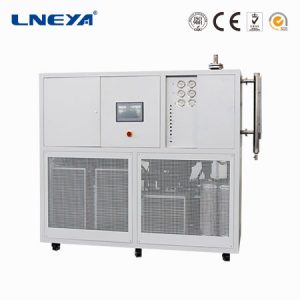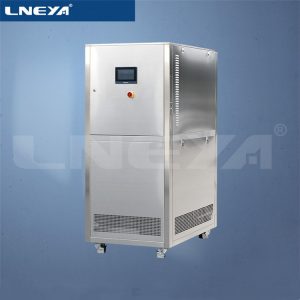What is the temperature control method of the reactor?
The reaction kettle used for temperature control has a large capacity and a thick wall, so it is a controlled object with a large heat capacity and a long pure lag time. As the reaction progresses, the heat transfer coefficient of each heat transfer medium changes nonlinearly, and the The changes of various external environments are relatively sensitive; in addition, the gain of the reaction process will change greatly, and even the direction of gain change is different; and as the reaction progresses, the solid particles in the kettle will increase, and the heat transfer coefficient of the kettle will also increase. With irregular changes.
Due to the complexity and nonlinearity of the exothermic process of the chemical reaction during the reaction process of the reaction kettle temperature control method, the heat transfer coefficient of each heat transfer medium changes nonlinearly, and is sensitive to the influence of various external disturbances, so that the control has a certain degree of control. difficulty. If the heat is not removed in time and unevenly during the reaction process, the reaction temperature will continue to rise, and it is easy to cause “flying temperature” phenomenon due to local overheating, resulting in “burst”; on the contrary, if the heat is removed too much, it will cause The reaction temperature has been falling, causing the reaction to go out. The main factor for the quality of the polymerization reaction is the quality of the temperature control of the reactor. The change of temperature will directly affect the quality and output of the product, so the temperature control in this process is the key point and also the difficulty.
Reactor temperature control method The chemical reaction mechanism of the reaction process is relatively complicated, especially the design materials, energy balance, reaction kinetics, etc. of the polymerization reaction process, plus external conditions such as raw material purity, catalyst type, change in the amount of raw material added, hot water temperature , the change of circulating coolant flow rate, etc. have a great influence on the system, and it is difficult to derive the mechanism model; and because of the complexity and nonlinearity of the exothermic process of the chemical reaction.
Reactor temperature control method and technology is a relatively complicated topic in the field of refrigeration and heating. LNEYA is also constantly advancing and making progress in the field of refrigeration and heating.

관련 권장 사항
-
초저온 재순환 냉각기에 성에가 생기는 이유
1084많은 사용자가 초저온 재순환 냉각기를 사용하는 반면 일부는 그렇지 않은 경우 프로스팅이 나타납니다. 혼란스럽고 냉동과 관련이 있는지 여부 우선, 초저온 재순환 냉각기가 왜 ...
세부 정보 보기 -
수냉식 냉각기의 윤활 시스템을 유지하는 방법
996중형 수냉식 냉각기, 냉동 온도 범위 -80 ℃ ~ -30 ℃, 안전하고 신뢰할 수 있으며 액체에 대한 급속 냉각, 석유 화학, 의료, 제약, 생화학 및 동결 건조, 군사 및 기타 첨단 기술 분야에서 널리 사용됩니다 ...
세부 정보 보기 -
Precautions for cooling and heating during operation of various reactors
960In many laboratories, various reaction vessels of chemical companies are indispensable reaction vessels, and its operating temperature: -80°C-250°C. The laboratory reactor works at normal temperature, and cooling water must be passed normally to a...
세부 정보 보기 -
About the components of the reactor chiller refrigeration heating circulator
1312The reactor chiller refrigeration and heating circulator is used to control the heater and cooler, adjust the temperature, and maintain the stable temperature of the material. Through the circulating medium, the temperature of the material can be ...
세부 정보 보기
 LNEYA 산업용 냉각기 제조업체 공급 업체
LNEYA 산업용 냉각기 제조업체 공급 업체













